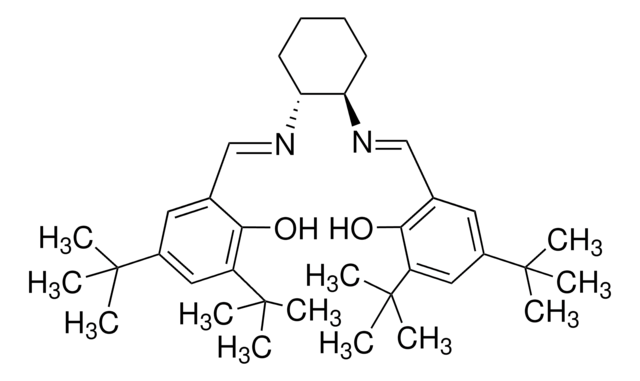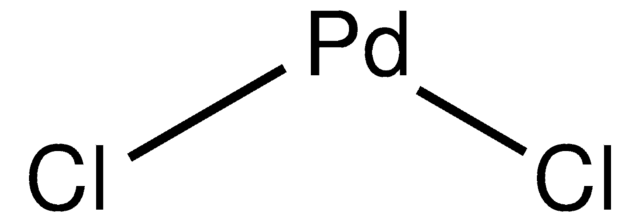520918
Cloruro de oro(III) trihydrate
≥99.9% trace metals basis
Sinónimos:
Tetracloroaurato (III) de hidrógeno, Ácido tetracloroaurico (III)
About This Item
Productos recomendados
Quality Level
assay
≥99.9% trace metals basis
form
crystals and lumps
composition
Au, 48.5-50.25%
packaging
glass bottle of 1 g
glass bottle of 25 g
glass bottle of 5 g
impurities
≤1000.0 ppm Trace Metal Analysis
SMILES string
Cl[H].[H]O[H].[H]O[H].[H]O[H].Cl[Au](Cl)Cl
InChI
1S/Au.4ClH.3H2O/h;4*1H;3*1H2/q+3;;;;;;;/p-3
InChI key
XYYVDQWGDNRQDA-UHFFFAOYSA-K
¿Está buscando productos similares? Visita Guía de comparación de productos
General description
Application
signalword
Danger
hcodes
Hazard Classifications
Acute Tox. 4 Oral - Aquatic Chronic 2 - Eye Dam. 1 - Met. Corr. 1 - Skin Corr. 1B - STOT RE 2 Oral
target_organs
Kidney
Storage Class
8B - Non-combustible corrosive hazardous materials
wgk_germany
WGK 3
flash_point_f
Not applicable
flash_point_c
Not applicable
ppe
Eyeshields, Faceshields, Gloves, type P3 (EN 143) respirator cartridges
Elija entre una de las versiones más recientes:
¿Ya tiene este producto?
Encuentre la documentación para los productos que ha comprado recientemente en la Biblioteca de documentos.
Los clientes también vieron
Artículos
Plasmonic nanoparticles have unique optical properties that can be tailored to suit a variety of applications in the biotechnology1–8 and electronics9–16 industries.
Nuestro equipo de científicos tiene experiencia en todas las áreas de investigación: Ciencias de la vida, Ciencia de los materiales, Síntesis química, Cromatografía, Analítica y muchas otras.
Póngase en contacto con el Servicio técnico















